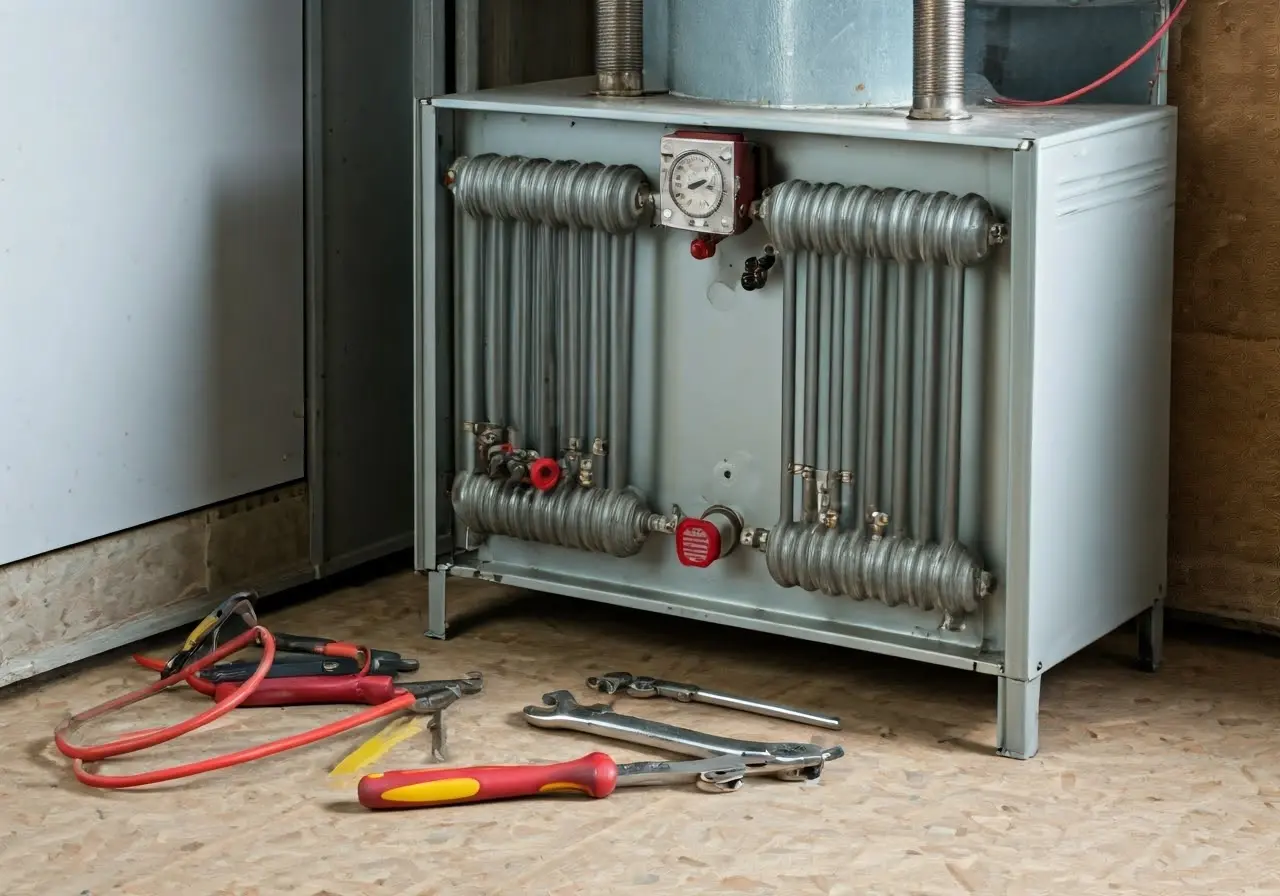As cold weather approaches, ensuring your home’s heating system is in top condition becomes a top priority. For Centennial homeowners, this often poses the age-old question: should you repair your existing furnace or replace it altogether? In this guide, we’ll walk you through the key factors to consider, helping you make an informed decision.
Understanding Your Furnace’s Lifespan
Most furnaces have a lifespan of 15-20 years. If your furnace is approaching or has exceeded this age, it might be time to consider a replacement rather than continuing to invest in repairs. Understanding the life expectancy of these systems is crucial when deciding between repair or replacement. For instance, a furnace that functions optimally under rigorous maintenance might stretch slightly beyond its typical lifespan, whereas those neglected may fail much sooner source.
Beyond age, consider how well your furnace performs during its duty cycles. If it frequently falls short of heating your entire home evenly, this inconsistency can be a sign it’s nearing the end of its lifespan. Frequent breakdowns and repair needs are indicators that your aging unit is struggling and may soon require a more significant investment source.
Additionally, understanding your furnace’s history can offer insights. If your home is a recent purchase, it’s vital to ascertain the maintenance schedule followed by past owners. Irregular or sporadic servicing often diminishes the furnace’s expected life span and performance output source.
Evaluating Energy Efficiency
Newer furnace models are significantly more energy-efficient than those manufactured a decade ago. If your current furnace isn’t keeping up with efficiency standards, replacing it could lead to long-term savings on your energy bills. Energy efficiency ratings, such as the AFUE (Annual Fuel Utilization Efficiency), provide a useful yardstick for comparison. The higher the AFUE percentage, the more efficient the furnace, translating directly to lower operational costs source.
Older models typically must burn more fuel to provide the same amount of heat as a modern, high-efficiency unit. This not only increases immediate utility costs but also compounds wear on the system, hastening a need for replacement. By switching to a new furnace with advanced designs, homeowners can use less energy and reduce their carbon footprint: a winning solution for both wallets and the environment source.
Cost Analysis: Short-term vs. Long-term
While repairing your furnace might be cheaper in the short run, frequent repairs can add up. Weighing the costs of repairs versus the price and potential savings of a new unit is essential for making a sound financial decision. Evaluating the cumulative costs of parts and labor over the years, plus the impact of potential downtime in the colder months, paints a clearer picture of true expenses source.
Financial considerations also include rebates and financing options offered for newer energy-efficient equipment. Many government programs incentivize these upgrades through tax credits or direct rebates, effectively lowering the upfront costs. The reduction in monthly heating bills typically associated with a more efficient system shifts the financial equilibrium towards replacement over the long haul, making initial higher investments more justifiable.
Signs It’s Time for a Replacement
Unusual noises, inconsistent heating, and rising energy bills are signs your furnace might be on its last legs. Recognizing these signs early can help you transition to a new system without inconvenience. Particularly in older homes, a yellow flame instead of the usual blue or the presence of soot around the furnace opening may also signal that your equipment is aging and potentially hazardous source.
Awareness of smells and sounds can also hint at deeper issues. Unfamiliar clangs or banging, and odors resembling burnt fuel may indicate parts of the system that are malfunctioning or failing entirely. Addressing these issues promptly with a professional inspection will safeguard your home and prevent more significant system failures.
Consulting with a Professional
When in doubt, it’s always beneficial to consult with a heating professional. They can provide a thorough evaluation and recommendations tailored to your specific needs and budget. A skilled technician will assess your home’s requirements and suggest the most fitting solutions, whether that involves an upgrade to a newer model or addressing existing repair concerns source.
In fact, working with experts not only ensures successful installations and maintenance but also brings peace of mind through warranties and service agreements. These agreements often cover regular maintenance checks, which is a critical factor in prolonging your furnace’s life, ultimately saving you from unexpected breakdowns and costly repairs.
Making the Right Choice for Your Home
Ultimately, the decision between repairing or replacing your furnace hinges on several factors including age, efficiency, and cost. By evaluating these aspects and consulting with a professional, Centennial homeowners can ensure their homes remain warm and comfortable. Remember, investing in the right solution today can lead to greater savings and peace of mind tomorrow.

